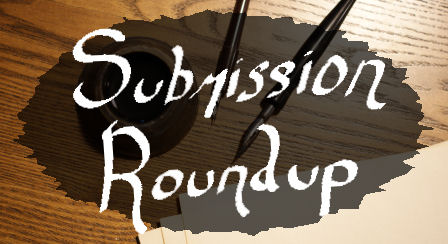Welcome back for this week’s author interview! Today, I’m thrilled to spotlight author Amanda Desiree. Her debut novel, Smithy, is earning rave reviews and rightfully so. I was fortunate enough to meet Amanda at StokerCon in 2018 when we were on a classic horror panel together. It was such a joy to hear her unique insight into the genre then, and so I figured it was long past time to feature her here on my blog.
Recently, she and I discussed the inspiration for her new novel as well as why she loves the horror genre.
A couple icebreakers to start: when did you decide to become a writer, and who are some of your favorite authors?
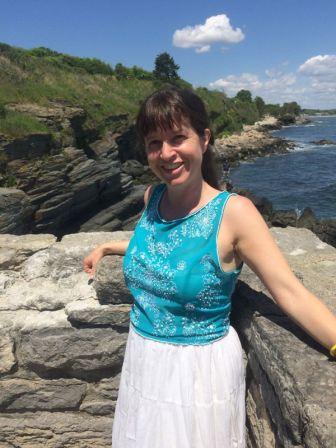 From a young age, I enjoyed telling stories. In elementary school, I would make up stories and pretend that I was reading them aloud to a classroom of students the way our teachers read to us from picture books. By the time I was in middle school, I was motivated to actually write my own book instead of imagining that I had written a book. I read a number of young adult and middle grade horror series like R.L. Stine’s “Fear Street” and Engle and Barnes’ “Strange Matter,” and I had ideas about how those books could be improved. I started outlining my own horror series for young readers when I was in the sixth grade, but I didn’t work up the nerve to actually try writing a book until I was in the eighth grade. My first attempt was handwritten in a spiral bound notebook, but my hand cramped too much so I switched to dictating my books on tape instead. Even then, my real ambition was to become a parapsychologist. Writing was going to be a side gig, a secret life. I planned to release my books under a pseudonym. Eventually I had to compromise some of my dreams. I never did become a parapsychologist, although I did major in psychology in college. The dream of writing never faded though. Over time, I became more focused on bringing a book into the world. I’m so glad to finally have achieved that goal.
From a young age, I enjoyed telling stories. In elementary school, I would make up stories and pretend that I was reading them aloud to a classroom of students the way our teachers read to us from picture books. By the time I was in middle school, I was motivated to actually write my own book instead of imagining that I had written a book. I read a number of young adult and middle grade horror series like R.L. Stine’s “Fear Street” and Engle and Barnes’ “Strange Matter,” and I had ideas about how those books could be improved. I started outlining my own horror series for young readers when I was in the sixth grade, but I didn’t work up the nerve to actually try writing a book until I was in the eighth grade. My first attempt was handwritten in a spiral bound notebook, but my hand cramped too much so I switched to dictating my books on tape instead. Even then, my real ambition was to become a parapsychologist. Writing was going to be a side gig, a secret life. I planned to release my books under a pseudonym. Eventually I had to compromise some of my dreams. I never did become a parapsychologist, although I did major in psychology in college. The dream of writing never faded though. Over time, I became more focused on bringing a book into the world. I’m so glad to finally have achieved that goal.
R.L. Stine remains a sentimental favorite. He definitely had a formative influence on my early writing. Richard Matheson was a magnificent and versatile writer in different genres and different formats. I love his formula of taking a realistic situation and inserting a drop of the mysterious. Books like “Stir of Echoes” and “I am Legend” feel psychologically real, no matter how fantastic the situation becomes. I adore Robert McCammon’s works. Most of my favorite writers have written at least one stinker, but nothing I’ve read from him yet has disappointed me. McCammon’s prose is gorgeous, his characters are well-rounded and sympathetic, and his stories are compelling no matter what the genre. Josephine Tey is another author who straddles different genres. Although she’s primarily known as a mystery writer, her books aren’t standard whodunits. They’re character studies wrapped in a problem to be solved. She only wrote eight books In her lifetime; but most of them are amazing. Though I’m not keen on short stories, I read a collection by E. Nesbit some years ago and fell in love with it. She has a gift for succinct descriptions that capture the essence of a character or scenario.
Congratulations on the release of your debut novel, Smithy! What can you share about the inspiration behind the book?
“Smithy” developed through a lucky coincidence. I’ve always been interested in real ghost stories. About six years ago I was reading a book by Roger Clarke called “A Natural History of Ghosts” that retold a number of the stories I had read about as a child but with more detail. For instance, I learned that when ghost hunter Harry Price decided to investigate reputedly haunted Borley Rectory, he recruited assistants who were independently wealthy because he expected them to pay their own room and board at the house. At the same time I was reading Clarke’s book, I happened to watch “Project Nim,” a documentary about a chimpanzee named Nim Chimpsky. Nim was the subject of a Columbia University primate language study that partially took place in a mansion off-campus. The research assistants lived in the house with Nim, taught him sign language, and raised him as if he were a human child. Unlike Price’s assistants, these researchers had access to the Delafield house courtesy of the university. In comparing these two studies, I started to consider what might have happened if Project Nim had taken place in a house like Borley Rectory with a reputation for being haunted. Animals are supposed to be able to see ghosts. What if an animal could also communicate with the ghost or communicate to other people about the ghost? The more I played out that imaginary scenario, the more motivated I became to write the story that eventually became “Smithy.”
In addition to your fiction, you also write a lot of nonfiction work on horror films. What draws you to nonfiction writing and reviewing? How is your approach to writing nonfiction different from (or similar to) writing fiction?
I’m an opinionated person and I also like to share what I know; writing reviews or informational pieces gives me the chance to do that. The biggest difference between writing non-fiction and fiction pieces is that I know off the bat how the non-fiction pieces are going to end. I’m a planner, so I use outlines both in my fiction and non-fiction writing. I won’t necessarily scribble out notes for a movie or book review, but I’ll generally follow a structure: start with a plot description, discuss my likes and dislikes, and introduce related information of interest. For instance, I might compare a remake of a film to the original, or discuss how an author’s personal life influenced their writing. When reporting about an event, I’ll write in chronological order. However, when writing fiction, I’ll often write scenes out of order, starting with what inspires most or what feels least intimidating. To the extent my fiction writing is based in reality, I’ll try my best to check my facts, and I’ll frequently double-check dates or other details for my reviews and articles.
What is it that draws you to horror? Do you remember the first horror film you saw or horror book you read?
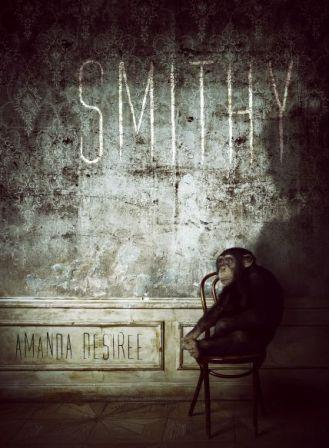 My first “horror” movie had to be either “Mr. Boogedy” or its sequel, “The Bride of Boogedy,” Disney television films about a zany family of practical jokers who move to a weird New England town and into the local haunted house, which once belonged to a pilgrim sorcerer nicknamed Mr. Boogedy. It’s mild to look at now, though the Boogedy make-up in the original film is rather intense for a child, almost like Freddy Krueger’s. I may have peeked through my fingers during the close-up of “Mr. Hamburgerface” or when his shadow suddenly rose up to menace the kids, but I watched those movies over and over when I was four and five. I’m not sure what about them attracted me. Maybe on some level it was fun to be scared. I read my first “horror” book at a young age, too. It was “Bumps in the Night” by Harry Allard, an illustrated chapter book about anthropomorphic animals holding a séance. My mother got it for me through my school’s monthly book order catalog; I hadn’t even noticed it when I was reviewing the catalog, but she must have had some reason for thinking her first grader would enjoy a ghost story.
My first “horror” movie had to be either “Mr. Boogedy” or its sequel, “The Bride of Boogedy,” Disney television films about a zany family of practical jokers who move to a weird New England town and into the local haunted house, which once belonged to a pilgrim sorcerer nicknamed Mr. Boogedy. It’s mild to look at now, though the Boogedy make-up in the original film is rather intense for a child, almost like Freddy Krueger’s. I may have peeked through my fingers during the close-up of “Mr. Hamburgerface” or when his shadow suddenly rose up to menace the kids, but I watched those movies over and over when I was four and five. I’m not sure what about them attracted me. Maybe on some level it was fun to be scared. I read my first “horror” book at a young age, too. It was “Bumps in the Night” by Harry Allard, an illustrated chapter book about anthropomorphic animals holding a séance. My mother got it for me through my school’s monthly book order catalog; I hadn’t even noticed it when I was reviewing the catalog, but she must have had some reason for thinking her first grader would enjoy a ghost story.
I actually find horror to be more alluring than scary. Supernatural elements introduce the possibility of grander and more mysterious things than we typically encounter in the real world. Horror stories that unfold in realistic modern settings especially appeal to me because they feel as if they could happen. And if they happen to normal, everyday people, maybe they could happen to me. More than any other effect it has, horror stimulates my imagination.
What’s your hope for the future of horror?
I hope to see the horror genre become more mainstream and respected. I see more bookstores featuring a separate horror section these days, and that’s a step in the right direction. However, these sections usually devote most of their space to the works of two or three high-profile authors. Imagine going to Barnes and Noble’s Mystery section and finding it consisted solely of Agatha Christie, Michael Connelly, and a handful of anthologies. Horror is just as diverse with just as many subgenres as mystery, fantasy, romance, or science fiction. I’d like for the general public to recognize that and also recognize that many different people write horror. Perhaps in the not too distant future, horror sections won’t consist of two shelves of books by authors from Maine but will reflect the full range of the genre.
If forced to choose, what’s your favorite part of the writing process: planning/researching a project, writing a first draft, or polishing an almost finished piece?
Writing a fresh story is definitely my favorite part of the writing process. When I’m able to translate my thoughts onto the page and actualize them into a scene, when I see the pieces come together in a complete story, it’s exhilarating. Being able to create something is the most energizing feeling in the world–when the writing is going well and the words are flowing smoothly. I’ve learned, through revising “Smithy” especially, how grueling and pitiless the editing process can be. That’s a skill I’m still working to develop. Research can sometimes be grueling too, even when the subject is engaging. I think primate language is interesting, but there came a point when I did want to read about something else. The research process also makes me anxious. I know there’s no way I can become an expert on a subject and I worry that I’ll miss something important and a reader will come to me one day and say, “You got this part wrong.” As a reader, I feel irritated when I come across incorrect information or find that an author has overlooked something. It breaks my suspension of disbelief. I hope that my work carries a satisfying balance of realism and speculation.
What projects are you currently working on?
Both of my current projects have been inspired by classic horror works. I’m polishing up an old manuscript that’s a prequel/retelling of “King Kong” from the point of view of the native islanders. I’m also finishing up the first draft of a sequel to “The Turn of the Screw” in which Flora, now a troubled adult, seeks the truth behind her brother’s death.
Where can we find you online?
My website desireesbooks.com is where you can read more about the books I write and topics of interest related to my writing. I also contribute reviews to the Facebook groups “Sci-Fi and Horror Movie Playground,” “Sci-Fi and Horror Book Playground,” and “Sci-Fi/Horror TV Show and Old-Time Radio Playground.”
Big thanks to Amanda Desiree for being this week’s featured author!
Happy reading!
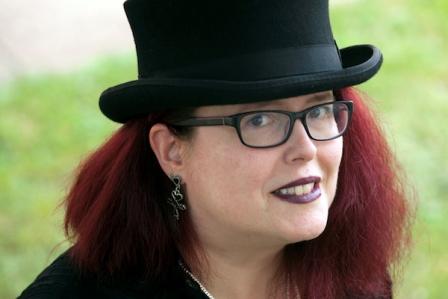 I truly cannot remember a time when I wasn’t writing. If it wasn’t a comic strip about cave girls and dinosaurs for my grade school magazine, it was Star Wars fanfic, which I didn’t even know was called fanfic back then. I decided to start pursuing publication in high school, when I typed up some of my best stories and sent them off to places like Twilight Zone Magazine. (They didn’t get accepted.) Although I gave up on that dream for a while in my 20s when the rejections got to be too much for me to handle, I never completely lost the drive.
I truly cannot remember a time when I wasn’t writing. If it wasn’t a comic strip about cave girls and dinosaurs for my grade school magazine, it was Star Wars fanfic, which I didn’t even know was called fanfic back then. I decided to start pursuing publication in high school, when I typed up some of my best stories and sent them off to places like Twilight Zone Magazine. (They didn’t get accepted.) Although I gave up on that dream for a while in my 20s when the rejections got to be too much for me to handle, I never completely lost the drive.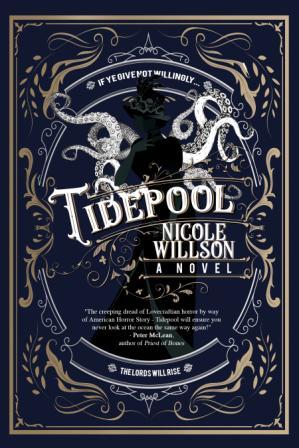 My processes for both are similar in that I generally start with an idea and then imagine the characters who might be in this particular situation. However, I tend to be a lot more freewheeling when I’m writing short fiction. I might start with the ending and work my way backwards, something I don’t think I’d ever be able to pull off with a novel. Or I might write different fragments of the short story and link them together, whereas I try to work straight through from beginning to end with a novel draft—I’ve found that if I write fragments of the novel, I may or may not do the work involved in connecting them and filling out the entire story.
My processes for both are similar in that I generally start with an idea and then imagine the characters who might be in this particular situation. However, I tend to be a lot more freewheeling when I’m writing short fiction. I might start with the ending and work my way backwards, something I don’t think I’d ever be able to pull off with a novel. Or I might write different fragments of the short story and link them together, whereas I try to work straight through from beginning to end with a novel draft—I’ve found that if I write fragments of the novel, I may or may not do the work involved in connecting them and filling out the entire story.
